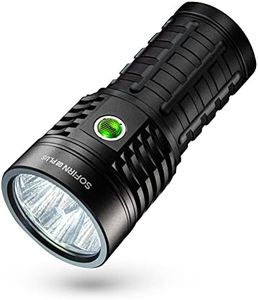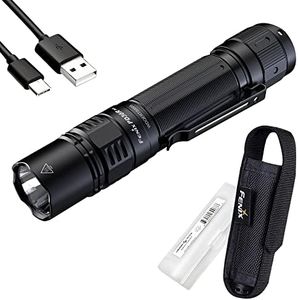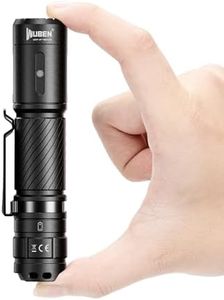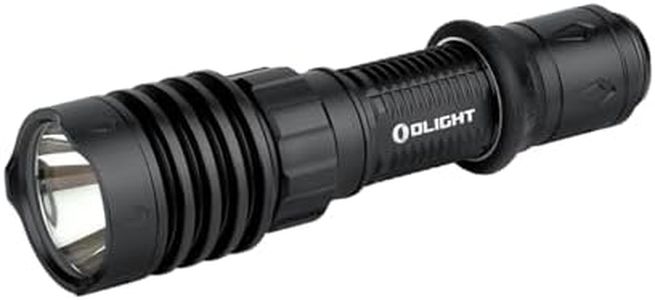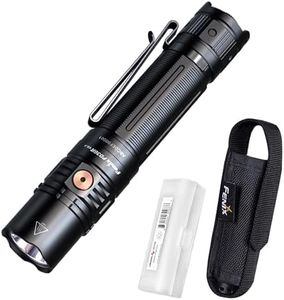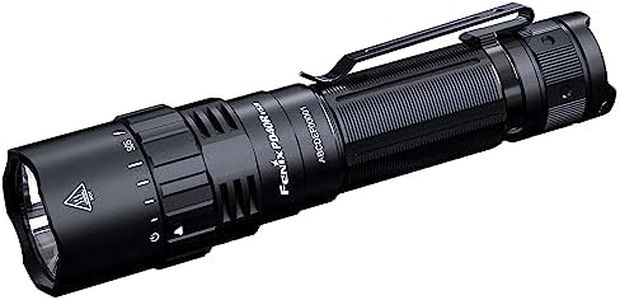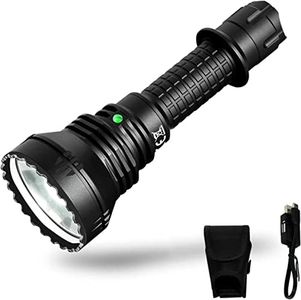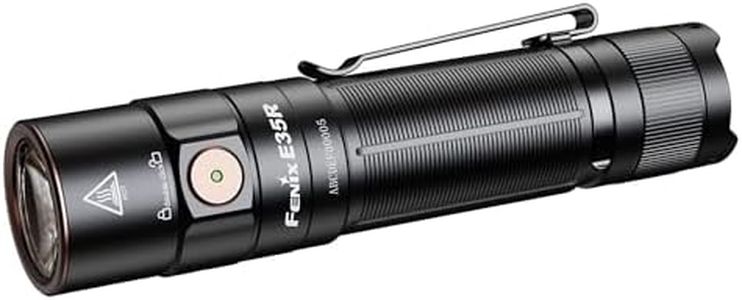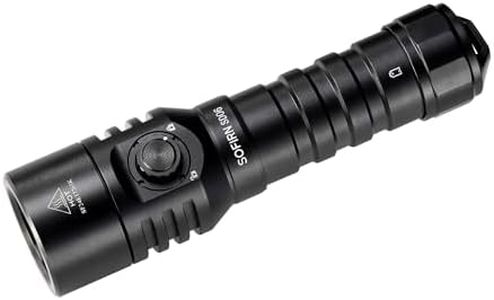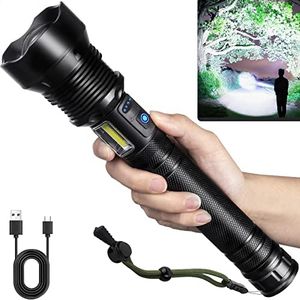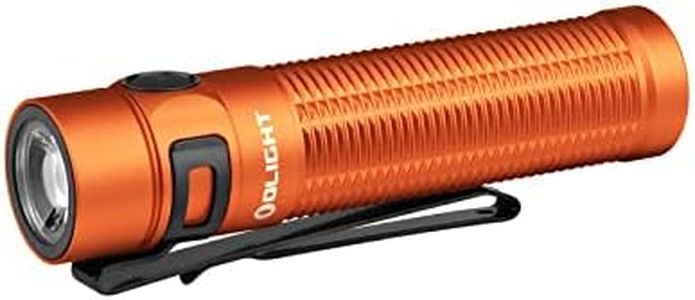We Use CookiesWe use cookies to enhance the security, performance,
functionality and for analytical and promotional activities. By continuing to browse this site you
are agreeing to our privacy policy
10 Best 18650 Flashlights
From leading brands and best sellers available on the web.Buying Guide for the Best 18650 Flashlights
Choosing the best 18650 flashlight means understanding what you need it for and balancing portability, brightness, battery life, and durability. The 18650 refers to the battery size, which is popular for offering high capacity and being rechargeable. Before making a decision, consider where and how you’ll use your flashlight—whether it’s for hiking, work, emergency situations, or everyday carry. Knowing your intended use helps you focus on the features that matter most to you.Brightness (Lumens)Brightness in flashlights is measured in lumens, which tells you how much light the flashlight can emit. A higher lumen value means a brighter beam. For basic tasks like reading or around the house, a flashlight with up to 200 lumens is sufficient. Outdoor activities and work might require 400-1000 lumens, while over 1000 lumens is useful for search, rescue, or if you need a powerful beam over long distances. Think about if you need a subtle light for close tasks, or if you want to light up a larger area or long distance.
Battery LifeBattery life refers to how long the flashlight can run on a full 18650 battery. This depends on both the size of the battery and the brightness setting you use. If you want a flashlight for short bursts or emergencies, a shorter battery life at high brightness may be OK. For extended use like camping or power outages, look for flashlights offering several hours at low or medium settings. Consider your typical usage and how often you’ll be able to recharge.
Beam PatternThe beam pattern describes whether the flashlight casts a wide flood of light or a focused spot. Some flashlights are designed to throw a narrow, long-distance beam, while others offer a wider, more even light over a short distance. If you need to search or see far ahead, a focused or thrower beam is best. For reading, close work, or lighting up a room, a flood beam is more practical. Many flashlights offer adjustable focus, letting you switch between patterns.
Durability and Water ResistanceDurability involves how well the flashlight can handle drops, impacts, and rough environments. Water resistance, usually marked as IP ratings, shows how well the flashlight stands up to rain or immersion. If you’ll use the flashlight outdoors, in tough conditions, or around water, look for models advertised as impact-resistant and with higher IP ratings like IPX6 or IPX8. For mostly indoor or gentle use, basic durability and splash resistance are usually enough.
User Interface and ModesThe user interface is how you control the flashlight—whether it’s a simple on/off button or a complex set of buttons and modes. Different modes may include high, medium, low, strobe, or SOS functions. If you prefer simplicity, choose a flashlight with one or two modes. For more versatility, multiple brightness levels and special modes can be useful. Match your preference for easy operation or advanced features to how you plan to use the flashlight.
Size and PortabilitySize relates to both how easy the flashlight is to carry and how comfortable it is to use. 18650 flashlights range from compact models that fit in a pocket to larger ones with more features or higher durability. If you want something for everyday carry, look for a compact and lightweight option. For home, vehicle, or outdoor kit use, size may be less important than other features.
Charging MethodThe charging method tells you how you recharge the 18650 battery—either by removing the battery and charging it, or by plugging the flashlight in via a built-in port (like USB). Built-in charging is convenient if you don’t want to manage separate chargers, but removable batteries let you swap in spares for longer usage. Think about which is easier for you and where you’ll be charging your flashlight most often.

